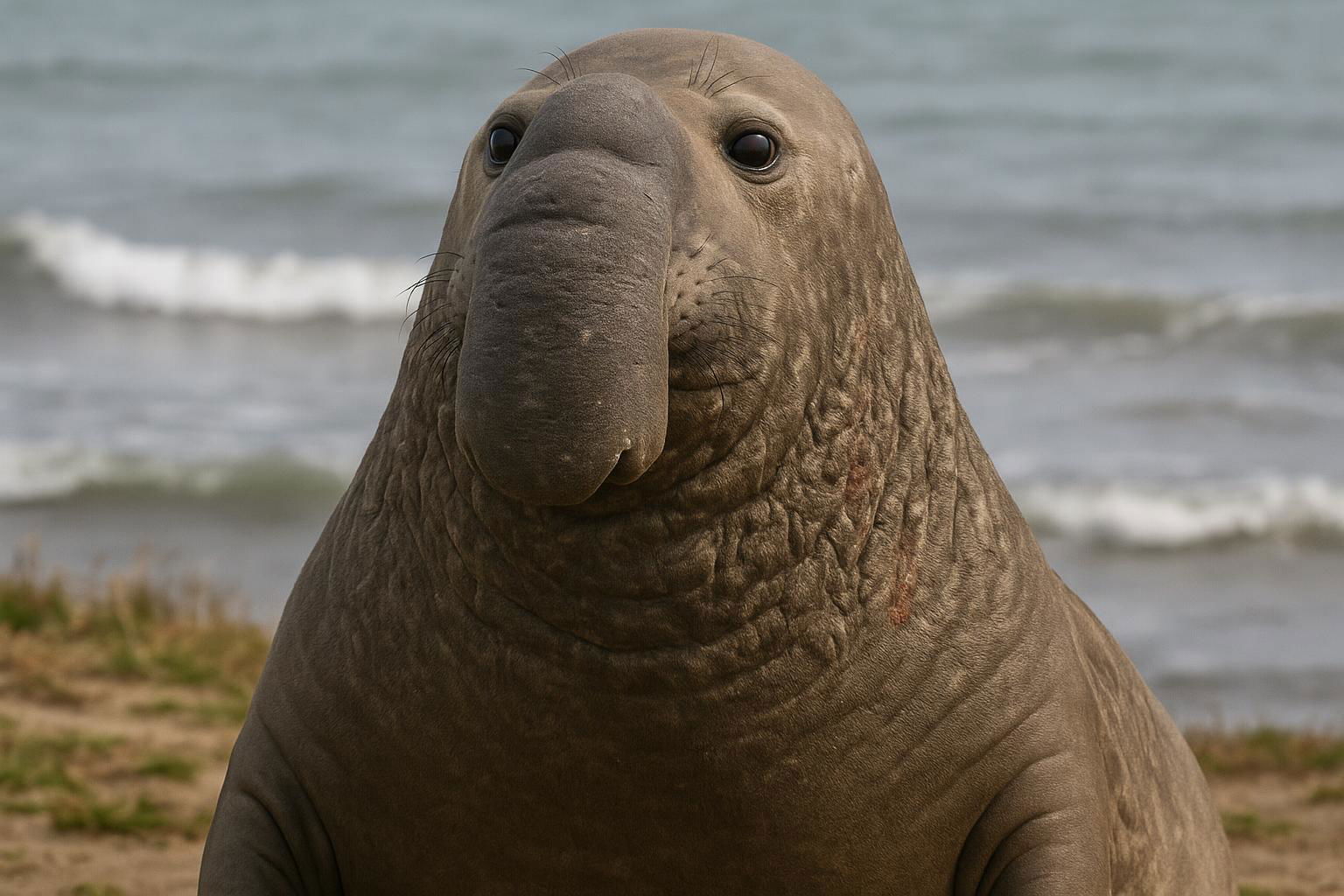
Northern Elephant Seal
Mirounga angustirostris
The Northern Elephant Seal (Mirounga angustirostris) is a captivating marine mammal known for its impressive size and distinctive features. Native to the Pacific coast of North America, these seals are the second largest pinnipeds in the world, with adult males weighing up to 5,000 pounds and measuring up to 16 feet in length, while females are significantly smaller, averaging about 1,800 pounds and 10 feet long. Their name is derived from the male's large, trunk-like proboscis, which resembles an elephant's trunk and plays a crucial role during the breeding season when males engage in vocal displays to establish dominance and attract mates.
Northern Elephant Seals have a remarkable life cycle, spending about 90% of their lives in the ocean, making prolonged deep dives—sometimes reaching depths of 5,800 feet and lasting up to two hours—as they forage for squid, fish, and other marine organisms. Remarkably adapted for deep-sea diving, they can slow their heart rate and store oxygen in their blood and muscles to endure long submersion periods.
These seals haul out on sandy beaches for breeding, molting, and resting primarily from December to March. During this time, males establish territories and harems, while females give birth to and nurse their pups before mating again. Northern Elephant Seals were once hunted to near extinction in the 19th century, but their population has rebounded significantly due to conservation efforts, although they still face threats from entanglement, climate change, and human disturbances. Their unique adaptations and recovery story make them a fascinating subject of marine biology and conservation studies.

 All Species & Breeds
All Species & Breeds
 Highland Cattle
Highland Cattle
 Miniature Donkeys
Miniature Donkeys
 All Species Directory
All Species Directory
 Highland Cattle in Virginia
Highland Cattle in Virginia
 Miniature Donkeys in Texas
Miniature Donkeys in Texas












